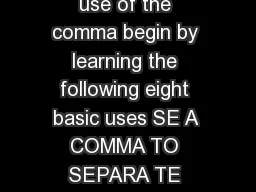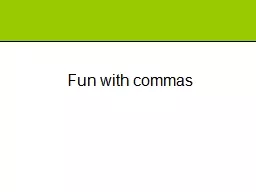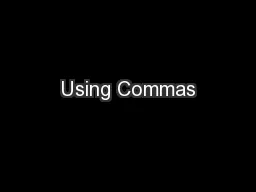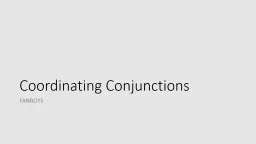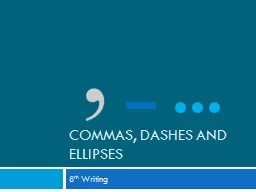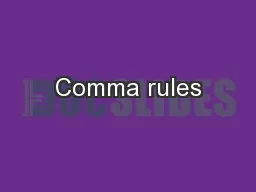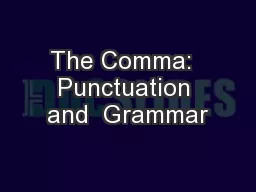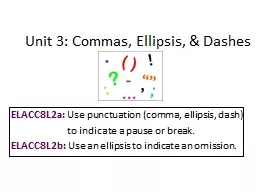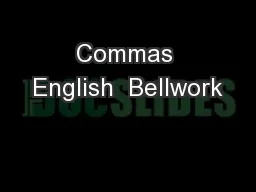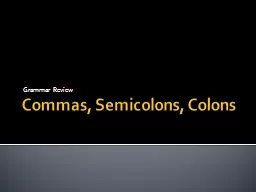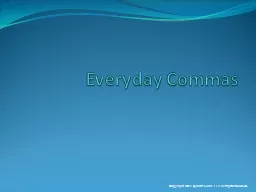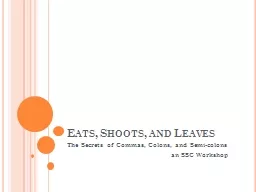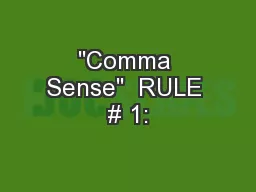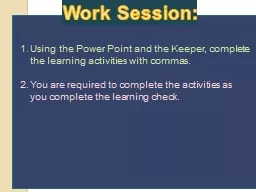PDF-Commas Eight Basic Uses To better understand the use of the comma begin by learning the
Author : lois-ondreau | Published Date : 2015-03-07
He walked down the street and then he turned the corner 2 You can go shopping with me or you can go to a movie alone 2 SE A COMMA AFTER AN INTRODUCTORY CLAUSE OR
Presentation Embed Code
Download Presentation
Download Presentation The PPT/PDF document "Commas Eight Basic Uses To better under..." is the property of its rightful owner. Permission is granted to download and print the materials on this website for personal, non-commercial use only, and to display it on your personal computer provided you do not modify the materials and that you retain all copyright notices contained in the materials. By downloading content from our website, you accept the terms of this agreement.
Commas Eight Basic Uses To better understand the use of the comma begin by learning the: Transcript
Download Rules Of Document
"Commas Eight Basic Uses To better understand the use of the comma begin by learning the"The content belongs to its owner. You may download and print it for personal use, without modification, and keep all copyright notices. By downloading, you agree to these terms.
Related Documents

